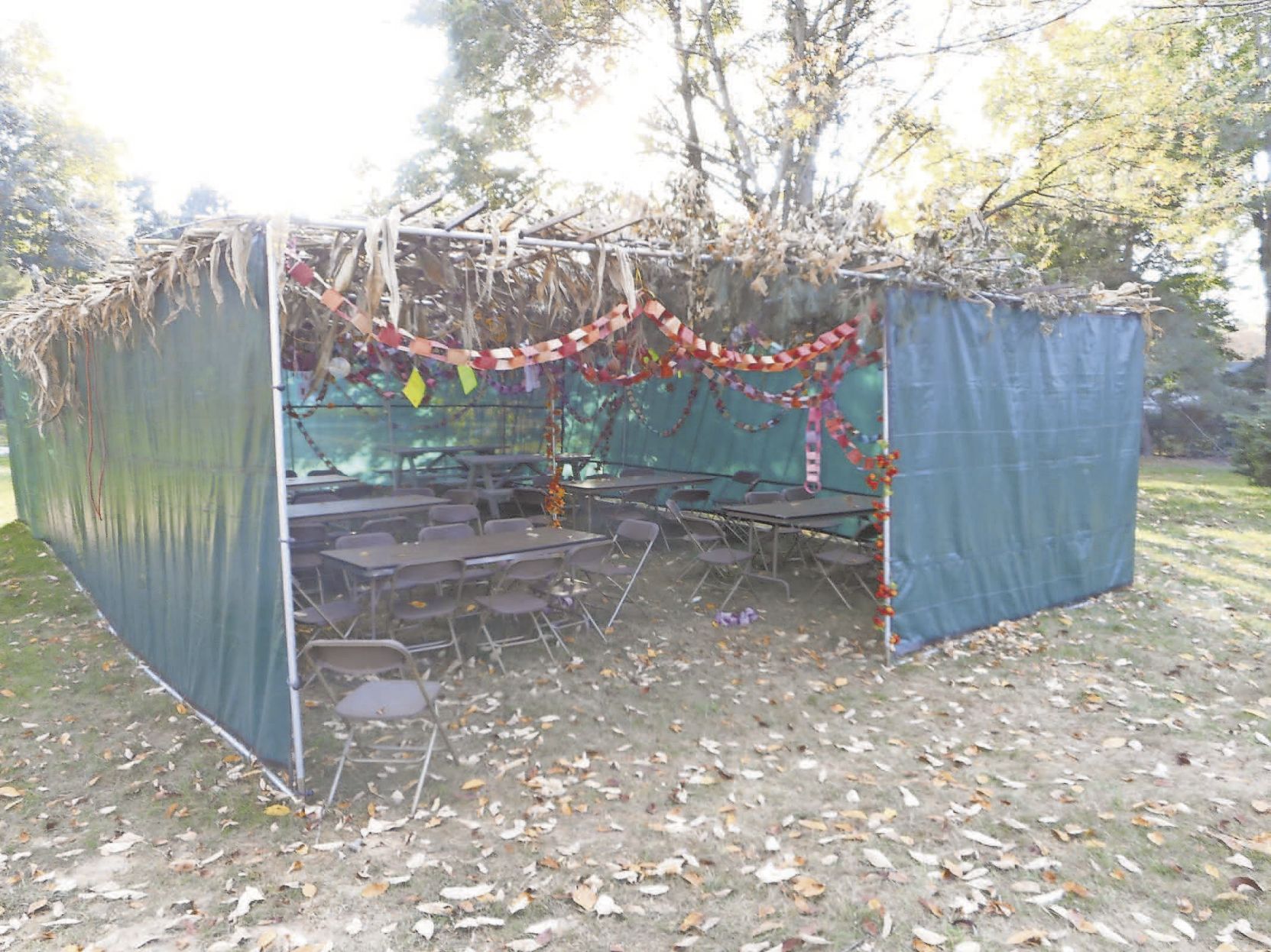By Steve Guggenhiem
Beth El Synagogue in East Windsor is a busy place this month. Rosh Hashanah, the Jewish new year, began Oct. 2, but that was only the beginning of a series of holidays on the Jewish calendar that follow in quick succession. Next was Yom Kippur, the most solemn day in the Jewish calendar, followed by Sukkot, Hoshanah Rabbah, Shemini Atzeret and Simchat Torah.
Yom Kippur is the Day of Atonement, a day of fasting when one asks forgiveness from God. After that is Sukkot. You may notice some temporary structures in the back of your neighbor’s house. That is a Sukkah, which commemorates when the Israelites wandered in the desert. Sukkot really means booth or tabernacle and Rabbi Jay Kornsgold says this is an opportunity to talk and think about the homeless. It’s a reminder that we go back to our houses when the holiday is over, but the homeless have no place to go.
But it’s more than just a serious holiday. During Sukkot people eat, and sometimes sleep, in the Sukkah. At Beth El there are a number of fun activities. Among them is the Sukkah Hop, when members of the synagogue visit Sukkah’s in parts of East Windsor and Hightstown. Other activities include a Sukkah luncheon and a Mens Club event, Sippin in the Sukkah.
Sukkot is one of three pilgrimage holidays in the Jewish calendar, as it signals the end of the harvest. The other two are Shavuot and Passover. The agricultural aspects of the holiday are on full display when people order their own lulav and etrog. The lulav is the palm, while the etrog is the citron fruit. Prayers are said over both and Rabbi Kornsgold says there is a procession around the synagogue with everyone holding their lulav and etrog.
The next holiday is Hoshanah Rabbah, which is the seventh day of Sukkot. This really ties in Rosh Hashanah and Yom Kippur. On Rosh Hashanah, according to Jewish tradition, the fate of Jews is determined and on Yom Kippur it is sealed. Rabbi Kornsgold says Hoshanah Rabbah is when you find out the verdict. He says it’s similar to a court handing down its verdict.
Shemini Atzeret is its own separate holiday. The rabbi says the Torah doesn’t explain why we have it, but it also is tied in to agriculture since it is a time when we pray for rain. During Sukkot we celebrate the nations of the world, while Shemini Atzeret celebrates the Jewish people.
Wrapping up the holidays is Simchat Torah. Rabbi Kornsgold says this gives us an opportunity to celebrate the year as we finish Deuteronomy, the last section of the Torah, before we start all over again with Genesis. The entire Torah is read every year. This is a fun holiday, especially for children, as you sing and dance with the Torah. Cantor Larry Brandspiegel also runs a “Quiz N Candy,” event.
Generally these holidays take place in September but Rabbi Kornsgold says the dates vary because the Jewish calendar is based on the lunar cycle, which has 354 days.

